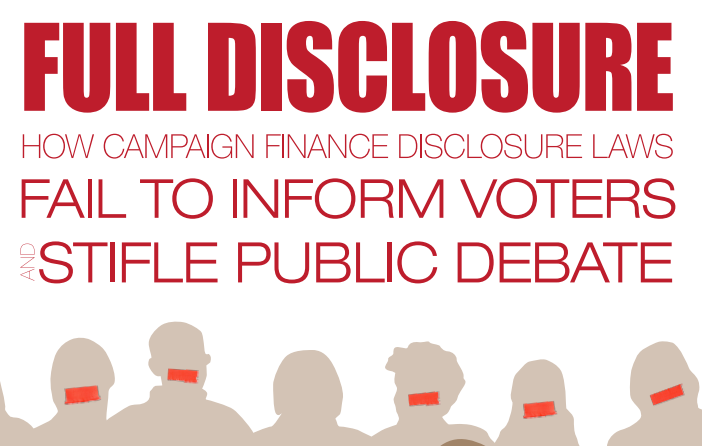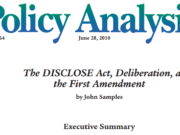Disclosure is intended to be a low-cost means of combating corruption by providing citizens with information about the funding sources and expenditures of groups that advocate for or against issues on the ballot. In practice, however, disclosure does little to inform voters while imposing onerous burdens on those wishing to participate in the democratic debate. In this study for the Institute for Justice, Associate Professor of Political Science and Business Administration at the University of Rochester and CCP Academic Advisor David M. Primo conducts an experiment to test the true value that voters place on disclosure.
Over 1,000 registered Florida voters were sorted into three groups and asked to give their position on a hypothetical ballot issue, with each of the three groups given different amounts of information in the form of news articles. Some of the articles disclosed information about the sources of support and opposition for the ballot issue. Group A received no information, Group B received news articles including some information about the interest groups supporting and opposing the ballot issue, and Group C received the articles that Group B received, plus two additional articles with more detailed information about the size of contributions made in support and opposition to the ballot issue. After having the opportunity to access this information, participants voted and were then asked to identify which groups had supported or opposed the ballot issue.
The results show that citizens place little value on disclosure information. 40% of participants in Groups B and C viewed no information at all before voting, and 35% viewed between 1 and 3 articles, with disclosure articles being particularly unpopular. The articles provided only to Group C, which contained the most specific and detailed disclosure information, were the two least-viewed articles among Group C participants. In addition to voters’ demonstrated lack of interest in disclosure information, they also appeared not to retain it. Participants with no knowledge about the source of support for the ballot issue (Group A) performed equally well at identifying which interest groups supported the issue as did members of Group B, who had access to that information. Members of Group C did marginally better, but the information provided voluntarily by interest groups through voter guides had a larger effect on voter awareness of interest group positions than did the disclosure articles. It also should be noted that the experiment’s design likely overstates the educational effect of disclosure laws, because the experiment provides news articles directly to the voter, whereas in the real world voters must go to greater effort to access this information. The experiment also included a higher proportion of disclosure articles than would typically be found in a random sample of news articles on a ballot issue, making it more likely that voters would access this information than in the real world, and therefore again biasing results to overstate the impact of disclosure. Despite these design factors overstating disclosure’s significance, the experiment still found remarkably little impact from public disclosure.
Primo’s experiment provides important empirical evidence through which the theories underlying disclosure requirements can be assessed. While disclosure is commonly portrayed as an essential tool for informing the public as to the sources of a candidate’s or group’s support, the behavior of voters displays a distinct lack of interest in detailed information about the source of support for ballot issues. If disclosure fails to provide information that voters find valuable, the costs imposed on groups by disclosure requirements should be treated with greater scrutiny.














